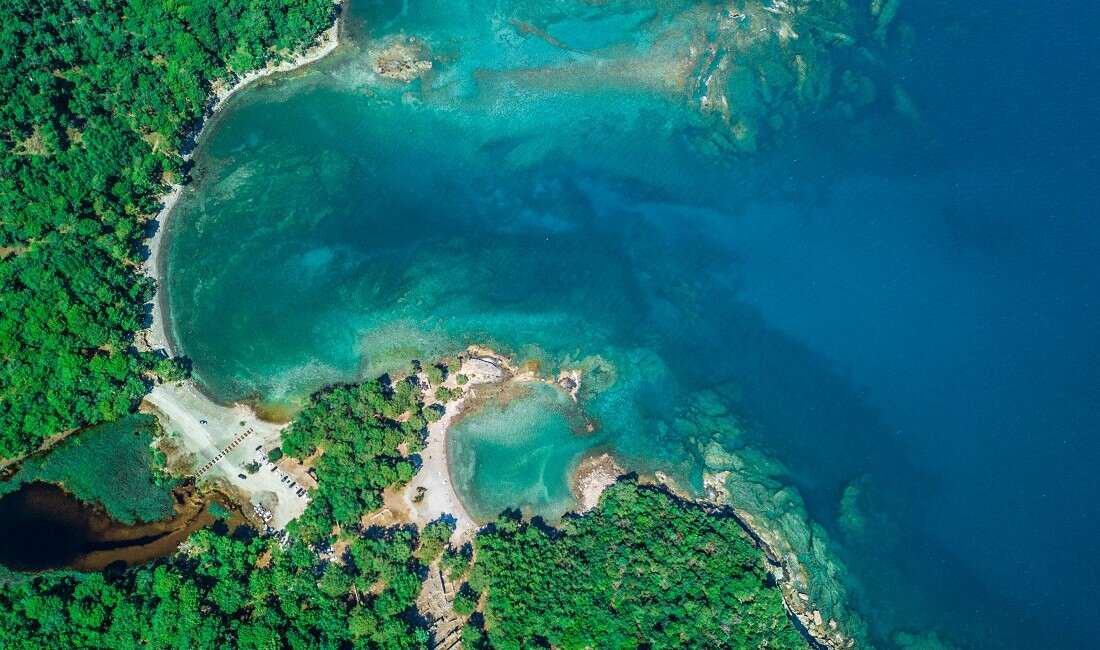
Phaselis is an ancient city nestled along the southwestern coast of present-day Turkey. Its historical significance and cultural heritage make it a captivating destination for history enthusiasts and nature lovers. From its founding by the Greeks to its prominence under various civilizations, Phaselis has left an indelible mark on the region’s history.
With its strategic coastal location and thriving maritime trade, Phaselis flourished as an important trading center in antiquity. The city’s rich heritage is reflected in its ruins and archaeological sites, which provide a window into the past and offer valuable insights into the ancient world. As visitors explore Phaselis, they are transported back in time, discovering the stories and legacies of those who once called this city home.
1. Early history
Colonists from Rhodes founded Phaselis in the seventh century B.C. The city was located on a strategic promontory along the Lycian coast, giving it access to land and sea trade routes. The natural harbor and the protection offered by the surrounding mountains made Phaselis an ideal hub for maritime activities.
Despite its humble beginnings as a trading outpost, the city quickly became a thriving city-state. Phaselis was known for its shipbuilding industry, and its ships were in high demand throughout the Mediterranean region. The town was also an important trade center, exporting various goods, including olive oil, wine, and textiles.
Phaselis was a member of the Lycian League, a confederation of city-states in southern Anatolia. The league was formed to protect the Lycian cities from foreign invaders, and it also promoted trade and commerce among the member cities.
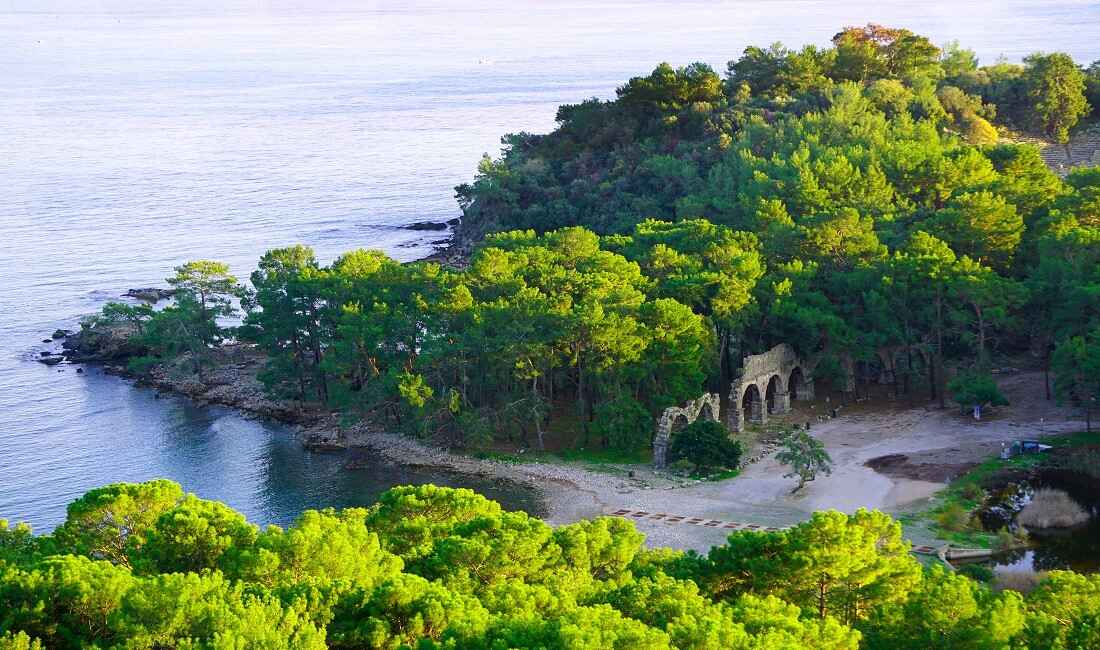
2. Persian Rule
Under King Darius I, the Achaemenid Empire conquered the Lycian coast, including Phaselis, in the fifth century B.C. Phaselis was under Persian rule briefly before the Greeks eventually drove them out during the Greco-Persian Wars.
The Persian occupation of Phaselis had a significant impact on the city. The Persians built several fortifications in Phaselis, including a citadel and a city wall. They also created many public buildings, including a temple and a bathhouse.
The Persian occupation of Phaselis also had a cultural impact on the city. The Persians introduced their own language, religion, and customs to Phaselis. The city’s population became increasingly Persianized, and the city’s culture began to reflect Persian influences.
The Persian occupation of Phaselis came to an end in 479 BC when the Greeks defeated the Persians at the Battle of Plataea. After the battle, the Greeks drove the Persians out of Phaselis and restored the city to its former Greek rulers.
The Persian occupation of Phaselis was a significant event in the city’s history. The Persians greatly impacted the city’s physical, cultural, and political makeup. The city’s experience under Persian rule would shape its future development and identity.
3. Alexander the Great
Alexander the Great took control of the Lycian coast, including Phaselis, in 334 BC. The city became part of Alexander’s empire and enjoyed a period of economic prosperity under his rule.
Alexander’s rule brought some benefits to Phaselis. The city was granted tax breaks, which allowed it to grow its economy. Alexander also built several public works projects in Phaselis, including a new harbor and aqueduct.
Phaselis also benefited from Alexander’s military campaigns. The city was located on a major trade route, and it became a popular stop for Alexander’s soldiers. This influx of soldiers brought money and trade to Phaselis, which helped the city grow.
Alexander’s rule in Phaselis ended in 323 BC when Alexander died. After Alexander’s death, Phaselis became part of the Ptolemaic Empire. The Ptolemies continued to rule Phaselis until the 1st century B.C. when the Romans conquered the city.
Alexander the Great’s rule was favorable in Phaselis’ history. The city enjoyed a period of economic prosperity and growth under Alexander’s rule. Phaselis’ strategic location on a significant trade route also made it a popular stop for Alexander’s soldiers, which brought money and trade to the city. Alexander’s rule helped shape Phaselis into the prosperous town it would become in later centuries.
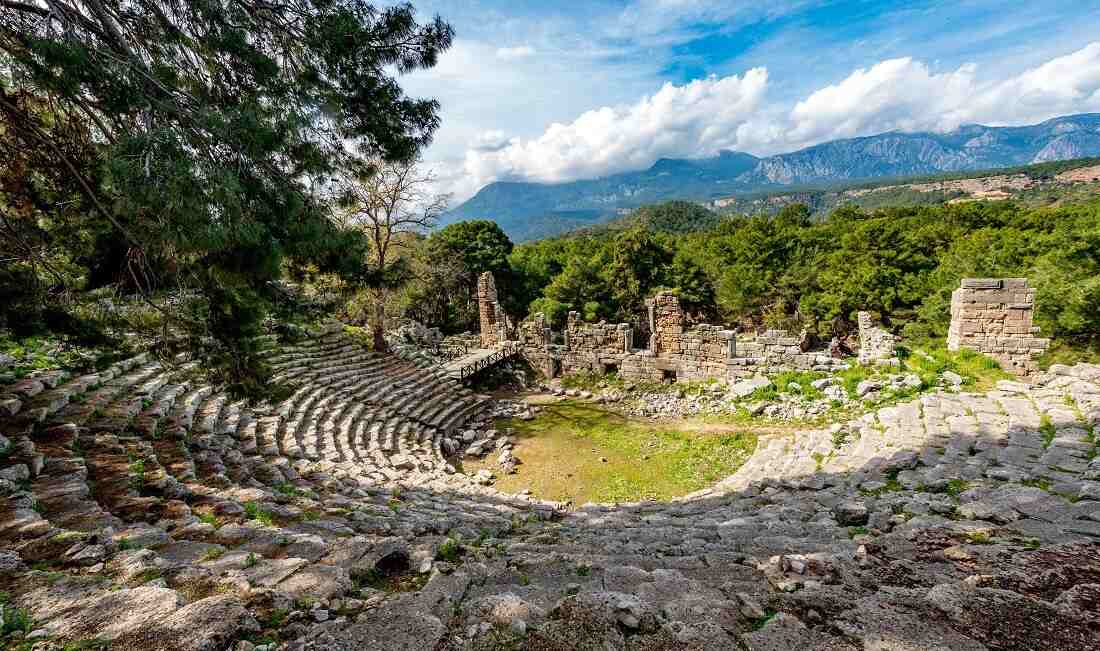
4. Hellenistic Period
The Hellenistic period was a time of outstanding cultural and intellectual achievement in Phaselis. The city was home to many famous philosophers, poets, and artists. The city’s schools of philosophy were particularly renowned, attracting students from all over the Mediterranean region.
Some of the most famous philosophers who lived in Phaselis during the Hellenistic period include:
Zeno of Citium, the founder of Stoicism: Zeno was born in Citium, Cyprus, in 334 BC. He came to Phaselis in 301 BC, where he founded the Stoa, a philosophy school emphasizing virtue, duty, and reason. Zeno’s teachings profoundly influenced Western thought, and he is considered one of the most influential philosophers of the Hellenistic period.
Epicurus, the founder of Epicureanism: Epicurus was born in Samos, Greece, in 341 BC. He came to Phaselis in 311 BC, where he founded the Garden, a school of philosophy that emphasized pleasure and freedom from pain. Epicurus’ teachings were controversial in his own time, but they have had a lasting influence on Western thought.
Diogenes of Sinope, the Cynic philosopher: Diogenes was born in Sinope, Greece, in 412 BC. He came to Phaselis in 335 BC, where he lived a life of poverty and simplicity. Diogenes was known for his outspoken criticism of society and was often seen as a madman or a nuisance. However, he was also respected for his courage and commitment to living a life of virtue.
In addition to its schools of philosophy, Phaselis was also a center of art and literature. The city was home to many famous poets and artists, including poet Meleager and sculptor Praxiteles. Phaselis’ cultural achievements during the Hellenistic period helped to shape the city’s identity and reputation as a center of learning and culture.
The Hellenistic period came to an end in the 1st century B.C. when the city was conquered by the Romans. However, the city’s cultural and intellectual legacy flourished under Roman rule. Phaselis remained a popular destination for students and scholars, and its schools of philosophy continued to attract students from all over the Mediterranean region.
5. Roman Rule
In the second century B.C., the Romans conquered Phaselis. The city became part of the Roman Empire and continued to prosper under Roman rule. Phaselis became a popular destination for trade and tourism, known for its beautiful beaches and well-preserved ruins.
The Romans built several public buildings in Phaselis, including temples, baths, and theaters. The city also became a major center of the Roman navy, and its harbor was used to launch attacks on the pirates operating in the region.
Some of the most notable Roman structures in Phaselis include:
The Temple of Apollo: The Temple of Apollo was one of the most important temples in Phaselis. It was dedicated to the Greek god Apollo, the god of light, music, and poetry. The temple, constructed of marble, dates back to the second century B.C. In the fourth century A.D., an earthquake completely destroyed the temple, but it has since partially recovered.
The Baths of Hadrian: The Baths of Hadrian were built in the 2nd century A.D. and named after the Roman emperor Hadrian. The baths were a popular place for people to relax and socialize. The baths were equipped with hot and cold water baths and a sauna. In the fourth century A.D., an earthquake destroyed the baths, but they have since partially recovered.
The Theater: In the second century A.D., a theater with seating for two thousand people was constructed. The theater was used for various events, including plays, concerts, and gladiatorial contests. The theater suffered partial restoration after an earthquake in the fourth century A.D.
Phaselis continued to prosper under Roman rule until the 3rd century A.D. when pirates sacked it. The city never fully recovered from this attack and was eventually abandoned in the 13th century A.D.
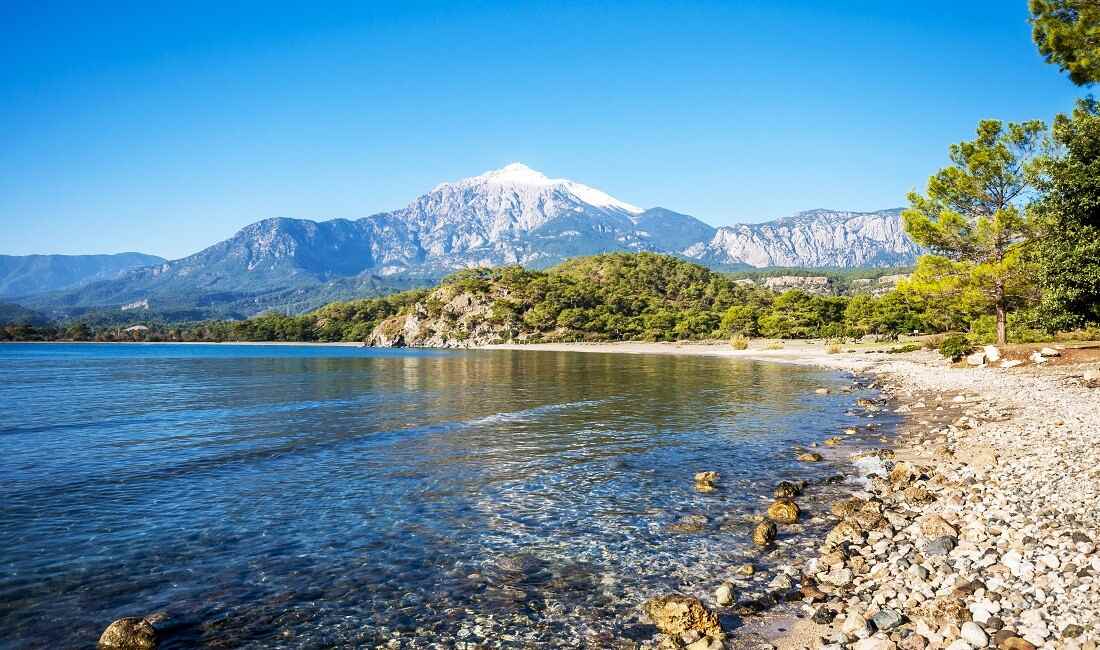
6. Decline and Abandonment
Phaselis began to decline in the 3rd century A.D. The Roman Empire’s political and economic instability impacted the city, in addition to pirates sacking it. By the 13th century, Phaselis had been abandoned.
Several factors contributed to the decline and abandonment of Phaselis. One factor was the rise of piracy in the Mediterranean Sea. In the 3rd century A.D., pirates became a significant problem in the region. They attacked ships and coastal cities and extorted money from merchants and travelers. One of the many cities that pirates targeted was Phaselis.
Another factor that contributed to the decline of Phaselis was the economic and political instability of the Roman Empire. The Roman Empire began to decline around the third century A.D. The empire faced financial problems, political instability, and barbarian invasions. These challenges made it difficult for the Roman Empire to protect its provinces, including Phaselis.
The decline of Phaselis was a gradual process. Following the pirate attack, the city remained in existence for several centuries but never fully recovered. By the 13th century, Phaselis had been abandoned.
7. Modern Era
A group of British archaeologists rediscovered Phaselis in the 19th century. The city has been excavated since then and is now a popular tourist destination. The ruins of Phaselis are well-preserved, offering a fascinating glimpse into the city’s long and rich history.
The ruins of Phaselis are spread out over a large area. The most notable ruins include the Temple of Apollo, the Baths of Hadrian, and the Theater. The city also has many well-preserved roads, bridges, and walls.
Phaselis is a popular tourist destination for several reasons. The city’s ruins are well-preserved, offering a fascinating glimpse into the city’s long and rich history. The city is also located on a beautiful stretch of coastline, which makes it a popular destination for swimming, sunbathing, and water sports.
Phaselis is a unique and fascinating place to visit. The city’s ruins offer a glimpse into a lost world, and its beautiful setting makes it a great place to relax and enjoy the outdoors.
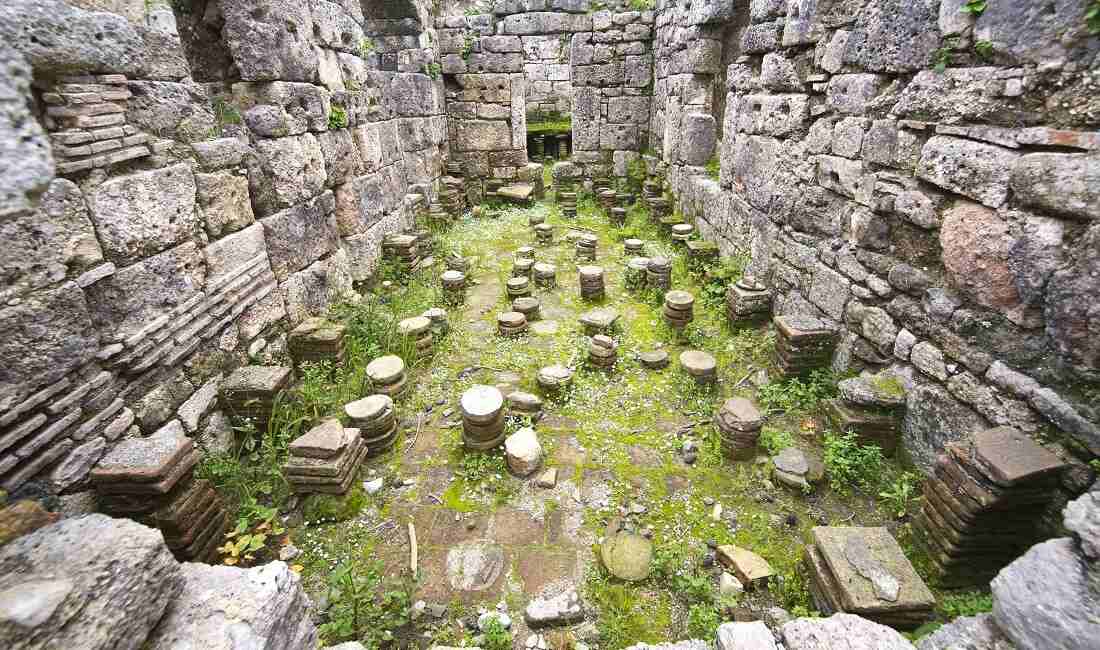
Phaselis was designed as a coastal city with a well-planned layout that took advantage of its natural features. One of the remarkable aspects of Phaselis was its three harbors. The North Harbor, the Central Harbor, and the South Harbor played vital roles in facilitating trade and maritime activities. They provided safe anchorage for ships and contributed to the city’s economic prosperity by connecting it to other Mediterranean ports.
The city’s street plan reflected its organization into three districts. The Northern District housed the military and administrative buildings, while the Central District was primarily residential. The Southern District, the commercial hub, featured shops, markets, and public spaces.
The architectural features of Phaselis demonstrated the city’s grandeur and sophistication. The city was enclosed by strong fortifications, including well-preserved city walls and gates. These structures served both defensive and symbolic purposes, marking the boundaries of Phaselis and protecting it from potential threats.
At the city’s heart stood the agora, a bustling marketplace and the center of civic life. It was a place for social gatherings, commercial transactions, and public meetings. The agora was surrounded by colonnades and adorned with statues and monuments, showcasing the artistic and cultural achievements of Phaselis.
The theater was another noteworthy architectural marvel in Phaselis. It boasted a spectacular backdrop of the surrounding mountains and the sea in the Central District. The theater’s design exemplified the excellence of ancient Greek and Roman architecture, with its tiered seating and well-preserved stage area. This venue was used for theatrical performances, musical events, and public assemblies, serving as a testament to the city’s cultural vibrancy.
The Temple of Athena and the Temple of Aphrodite were not the only notable temples in Phaselis; there were also temples dedicated to other gods and goddesses. These religious sanctuaries showcased the spiritual beliefs and practices of the city’s inhabitants, further enriching the cultural fabric of Phaselis.

Phaselis was a thriving city of trade and a center of cultural and artistic achievements. It nurtured an intellectual environment that fostered contributions to literature, philosophy, and the arts. Scholars and poets from Phaselis made notable contributions to Greek and Roman literature, producing works that reflected the city’s rich cultural heritage. The city’s natural beauty and coastal setting inspired poets to create evocative verses, capturing the essence of Phaselis in their writings.
Phaselis was also associated with renowned figures and schools of thought. The city was home to philosophers and scholars who engaged in intellectual debates and discussions, contributing to the philosophical and intellectual landscape of the time. These thinkers and their ideas influenced the Mediterranean, leaving a lasting legacy in philosophy and academic discourse.
The strategic location of Phaselis made it a significant hub for trade and maritime activities. Situated between the eastern and western Mediterranean, Phaselis served as a vital link in the commercial network of the ancient world. The city’s three harbors facilitated trade routes, allowing merchants to import and export goods from various regions.
Phaselis was renowned for its maritime prowess, and its ships sailed across the Mediterranean, connecting the city to other ports and civilizations. The city engaged in trade with neighboring Greek and Roman cities and distant lands such as Egypt, Asia Minor, and the Levant. The goods traded in Phaselis ranged from agricultural products like olive oil and wine to luxury items like textiles, spices, and precious metals.
The economic impact of Phaselis was significant, contributing to the city’s and its inhabitants’ prosperity. The wealth generated from trade fueled the development of infrastructure, public buildings, and cultural institutions. The bustling commercial activities in Phaselis created employment opportunities. They attracted merchants and traders from various regions, fostering cultural exchange and multiculturalism within the city.
Overall, Phaselis’s cultural and artistic achievements and commercial significance established the city as a prominent center of intellectual and economic activity in the ancient Mediterranean world.

Phaselis is blessed with natural beauty due to its location along the coast of present-day Turkey. The city’s picturesque setting between the Taurus Mountains and the Mediterranean Sea creates a captivating landscape that has attracted visitors throughout history. Combining azure waters, sandy beaches, and lush greenery, Phaselis is an enchanting destination.
The region surrounding Phaselis is known for its diverse ecosystems and rich biodiversity. The city is nestled within a unique ecological zone where the Mediterranean climate and the rugged mountain terrain converge. This ecologically rich area is a paradise for wildlife watchers and botanists.
The pine forests that surround Phaselis add to their natural charm. With their towering trees and aromatic scents, these forests provide a tranquil backdrop to the ancient city. Walking through the forested paths, visitors can immerse themselves in the sights and sounds of nature, experiencing the serenity that Phaselis offers.
One of the main attractions of Phaselis is its beautiful beaches. The Mediterranean Sea’s crystal-clear waters lap up several pristine stretches of sand in the city. The beaches of Phaselis provide the perfect setting for relaxation, sunbathing, and swimming. To experience the underwater world overflowing with marine life, tourists can participate in water activities like snorkeling and scuba diving.
In addition to the beaches, Phaselis is also known for its natural landmarks. The city is home to captivating coves and hidden bays, where visitors can discover secluded spots to unwind and enjoy the tranquility of nature. The idyllic coastal landscapes offer breathtaking views that leave a lasting impression on those who visit.
Phaselis’s natural beauty and coastal environment provide a harmonious blend of land and sea, inviting visitors to connect with nature and experience the serenity and splendor of the region. Whether strolling along the sandy beaches, exploring the pine forests, or simply basking in the gentle sea breeze, Phaselis offers an immersive and unforgettable natural experience.
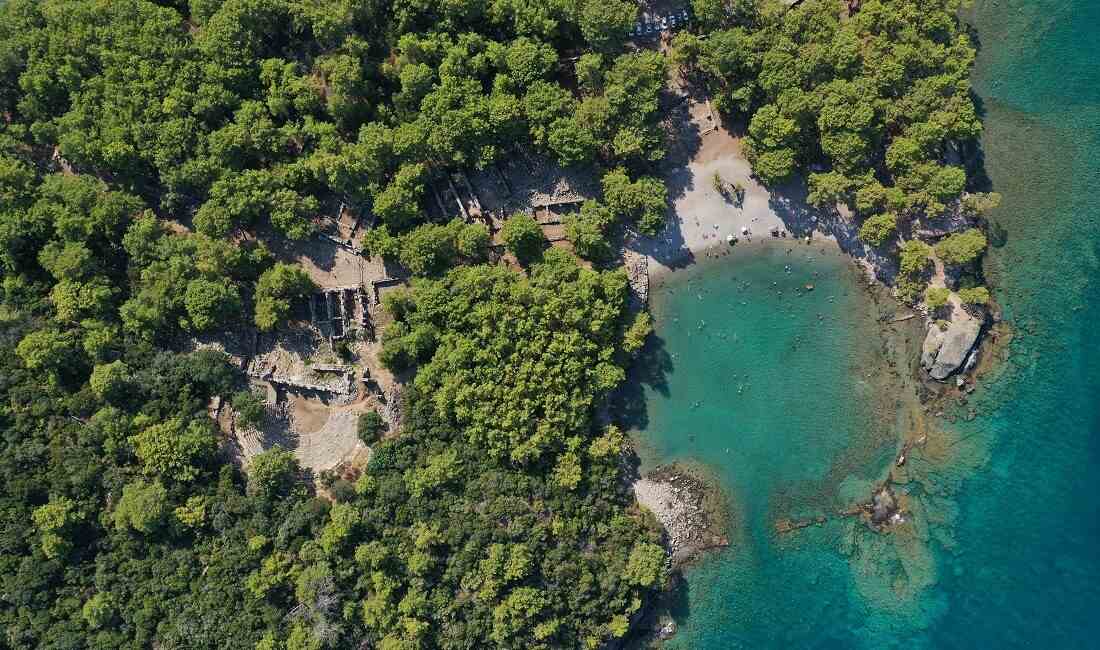
Preserving Phaselis and its ancient ruins comes with various challenges. The passage of time, natural elements, and human activities have all taken their toll on the archaeological site. Factors such as erosion, weathering, and the risk of looting or vandalism pose significant challenges to preserving Phaselis.
Authorities and organizations have implemented various measures to protect and conserve the site. In collaboration with local and national authorities, archaeological teams conduct ongoing research, excavation, and restoration projects to preserve the ancient ruins. These efforts aim to stabilize the structures, prevent further deterioration, and ensure the longevity of Phaselis for future generations.
Moreover, educational programs and awareness campaigns are carried out to encourage responsible tourism and bring attention to the significance of preserving Phaselis’ cultural heritage. The site’s preservation and historical significance rely heavily on partnerships between government agencies, local communities, and conservation organizations.
Phaselis has become a popular tourist destination due to its unique blend of history, natural beauty, and coastal environment. Visitors are drawn to Phaselis for its rich historical and archaeological significance. Exploring the well-preserved ruins allows visitors to step back in time and experience the ancient city’s grandeur. The combination of impressive architectural remains, such as the theater, the city walls, and the agora, offers a glimpse into the vibrant past of Phaselis and its inhabitants.
Moreover, the natural beauty of Phaselis acts as a magnet for tourists. The stunning coastal setting, with its pristine beaches, turquoise waters, and verdant landscapes, provides a serene and picturesque environment for relaxation and exploration.
Phaselis caters to the needs of tourists by providing various amenities and facilities. Visitors can find information centers or visitor centers that offer guidance about the site’s historical and natural features. Parking lots, restrooms, and picnic areas are available for guests’ convenience.
